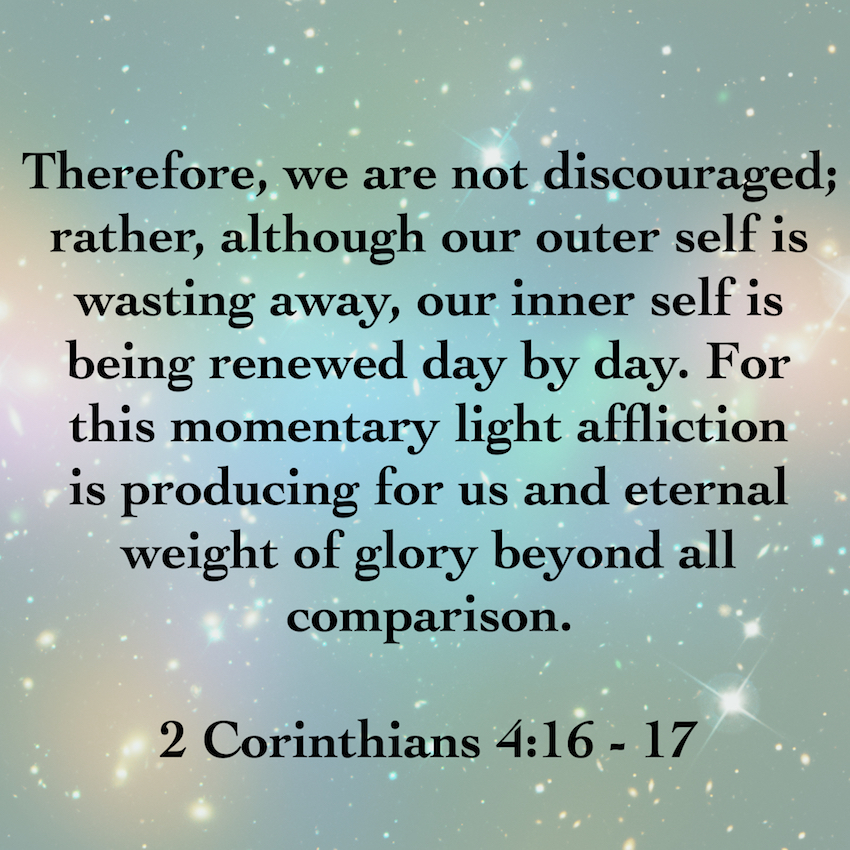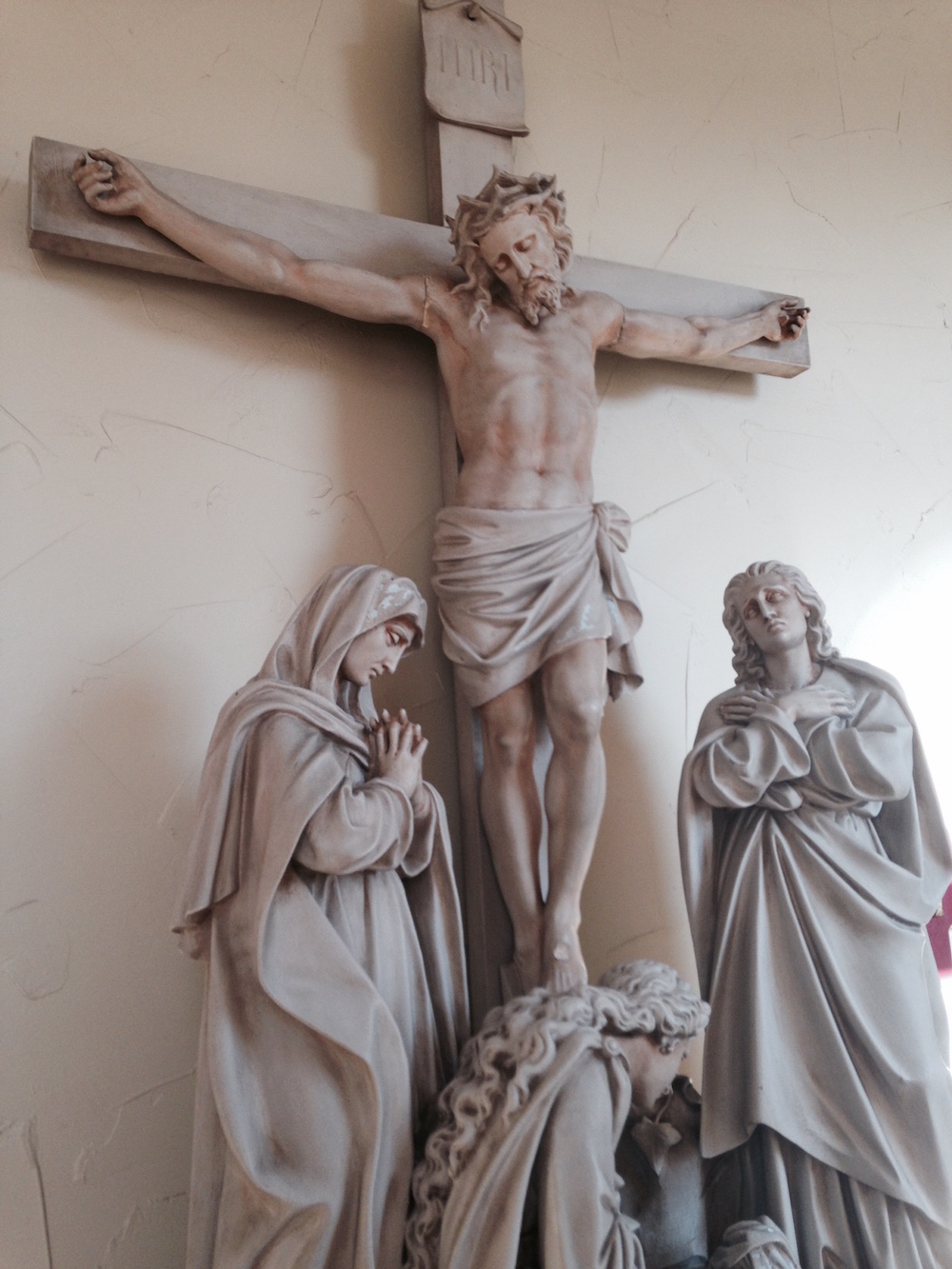While November brings to the fore the awareness of the holy souls in purgatory, the month of All Souls also begets an important question: Is purgatory a far away “place” or is it a state of existence all of us are called to, starting now?...
Read moreThe Healing Power, and Victory, of Embracing Change
There is an appointed time for everything, and a time for every thing under the heavens. Ecclesiastes 3:1
It was an epiphany of sorts, coming forth as a season of change presents itself. In the midst of a series of painful life adjustments, I admitted for the first time that I don’t like change. During a moment of insight, I suddenly understood that I associate change with chaos, uncertainty and pain, and with having the rug pulled right out from under my feet.
How many of us experience change this way?
As it often happens when God opens up a theme for metanoia (which means to change one’s mind and heart about something), all of life’s conversations and events suddenly seemed to segue into one single exclamation point. This week’s lesson in change was no exception.
First, there was the butterfly that lay on the ground in front of the chapel: a gorgeous creature decorated with brilliant fall colors that appeared to be trying to flutter its wings. Spontaneously, I leaned over and picked it up, only to realize that its wing was broken and that ants were already eating its corpse. Putting the butterfly back in its place, I went into the chapel to pray. There, I opened my spiritual reading to a page that, of all unexpected things, was discussing the butterfly as a metaphor for the spiritual life.
That got my attention.
A butterfly is probably the quintessential image of change: a being whose existence comes about by a metamorphosis that literally transforms a creature into something new, and quite often, into something stunningly beautiful. As I prayed with the image, it became quickly obvious that the broken-winged butterfly represented how I’ve tended to view change—not as something transformative and life giving, but as something traumatic, and even potentially deadly.
I could almost hear God whispering: Could it be time to embrace a new understanding of change?
My next stop was an Al-Anon meeting, where the topic of the day was…you guessed it: Change! It seems that a common theme among those adversely affected by the insanity of addiction is a strong resistance to change. Like me, many people healing from addiction’s fallout equate change with chaos and uncertainty—and with holding one’s breath to brace for what’s coming next. But the real insight of the meeting was that a person must be proactive about change in order to find healing. In fact, choosing to change is often absolutely necessary for new life to emerge.
This brought me back to the butterfly. Wanting to understand how metamorphosis occurs, I began to search the internet when I returned home. I was fascinated to learn that scientists often equate a caterpillar’s morphing into a butterfly with death and resurrection, a point that brought the whole lesson full circle. The greatest change that has ever happened in history—the greatest metamorphosis that’s ever taken place in the universe—was the Resurrection of Jesus Christ, which happened only after Jesus willingly chose to embrace death, and all of its accompanying terrors, to change the corruptible into what is incorruptible, and death itself into victorious new life.
Personal change usually involves our willful acceptance of many deaths—the death of our ways, our wills, our wishes—for the promise of new life. And little by little, through a process of transfiguration that takes time and patience, we begin to find our interior hardware radically rearranged unto glory, that we might alight with new wings that bear his brilliance—wings that can only burst forth by the shedding of the old and the awakening to the new. In a word, through change.

This article was previously published at Aleteia.
Have you consecrated your child to the Immaculate Heart of Mary? Click here to download a free "Mary's Way" Consecration Prayer.
If The Cross Has Triumphed, Why Is The World Still A Mess?
 With the Feast of the Triumph of the Cross having just presented itself again on the liturgical calendar, it’s hard not to wonder: If Christ triumphed on the Cross, then why is the world such a mess?
With the Feast of the Triumph of the Cross having just presented itself again on the liturgical calendar, it’s hard not to wonder: If Christ triumphed on the Cross, then why is the world such a mess?
During the past two weeks, I’ve wept over the news of a precious friend’s recurrence of beastly breast cancer, wept with a still-grieving friend over the loss of a loss of her infant son several years ago, and listened to a friend’s weeping heart over the agony of his son’s addiction. These friends I’m crying with and for? All great people of faith. All devout Catholics who deeply love the Lord. All seeking to look at the serpent that’s bitten to find life instead of death (Numbers 21:9).
For a long time, I believed that being triumphant as a Christian meant that life would somehow magically go well. I can still hear that peppy song we used to sing every Sunday at the little evangelical church I attended in my twenties: Abiding in the vine/abiding in the vine/ love, joy, health, peace, he has made them mine/ I’ve got prosperity, power and victory, abiding, abiding in the vine.
I bit into that message hook, line and sinker because I wanted to believe that faith could somehow produce a particular outcome from God, and hence assure me of some control over life. I wanted to believe that faith could guarantee good results, because that perspective made life seem less daunting and me more powerful. The rude awakening of learning the hard way that “the abundant life” does not equal a pain free life was itself extremely painful, but it compelled me to seek a new understanding of the meaning of the Triumph of the Cross. In so doing, I discovered the work of Joseph Ratzinger (Pope Emeritus Benedict XVI) who’s had plenty to say about the meaning of the Cross.
Ratzinger once wrote:
God’s compassion has flesh. It means scourging, crowning with thorns, crucifixion, a tomb. He has entered into our suffering. What does this mean, what can it mean? We learn this before the great images of the crucified Jesus and the Pietà, where the mother holds her dead Son. Before such images and in them, men have perceived a transformation of suffering: they have experienced that God himself dwells in the inmost sphere of their sufferings and that they became one with him precisely in their bruises. (Ratzinger, The God of Jesus Christ: Meditations on the Triune God, 53)
Truth be told, many of us believe that if we could just get rid of our bumps and bruises, then God would be with us. Or conversely, we think that if God were really with us, then we wouldn’t suffer so many bumps and bruises. But that is not the message of the Cross. Ratzinger goes on: The crucified Christ has not removed suffering from the world. But through his Cross, he has changed men. (Ratzinger, 53)
How, we want to know? How has God transformed suffering when he hasn’t taken away life’s pain? And how has he changed mankind through the Cross, when life on this Earth is still disordered?
By entering into the bowels of human suffering, Christ transformed suffering from a dreaded curse into a love offering that becomes the gateway of intimacy with him—a door through which he comes to meet us in our broken humanity. On the Cross, Emmanuel’s presence on this Earth finds its definitive meaning—the place where the deepest human anguish becomes the very locus of God with us; where he makes himself present in every God-forsaken experience of human life. Further, Christ asks us to embrace the Cross and let its triumphal resurrection fruit bleed grace into us—grace that enables us to stand in faith, hope and love in the face of life’s most formidable challenges.
It is instructive that the Church places the Feast of Our Lady of Sorrows one day after the Feast of the Triumph of the Cross. The Mother of God, at the foot of the Cross, incarnates for us what “redeemed” suffering looks like. There she stands in travailing union with the God-man, uttering an acquiescent: Let it be done to me according to your will. There she stands in piercing pain, anticipating new birth, new life, a resurrection. There she stands with eyes fixed on Christ, trusting that love is stronger than death. The Crucifixion—his, hers, ours—thus becomes the place where each human being is intimately united to God.
It is not by eschewing pain and sorrow that we become victorious, but by inviting Christ into it that we receive the grace to perceive suffering as love, as gift, as triumph. And it is this very love—this self-gift—offered for others that turns wounds into glorified gashes in humanity capable of bearing great fruit. That is how the Cross changes us. And that is precisely where we experience its triumph.
This article was previously published at Aleteia.

